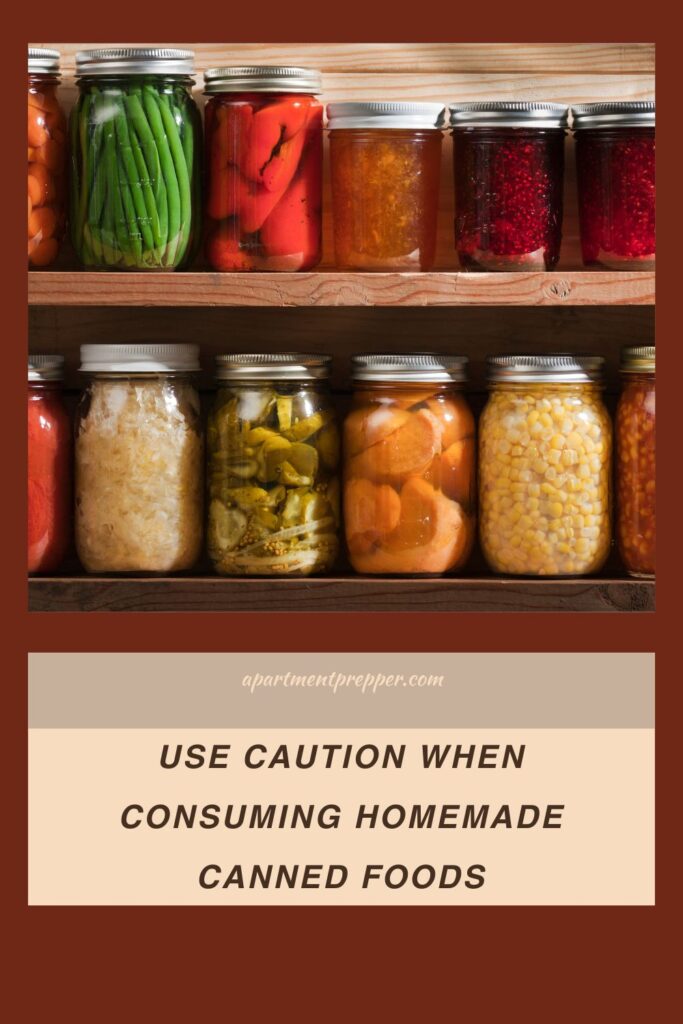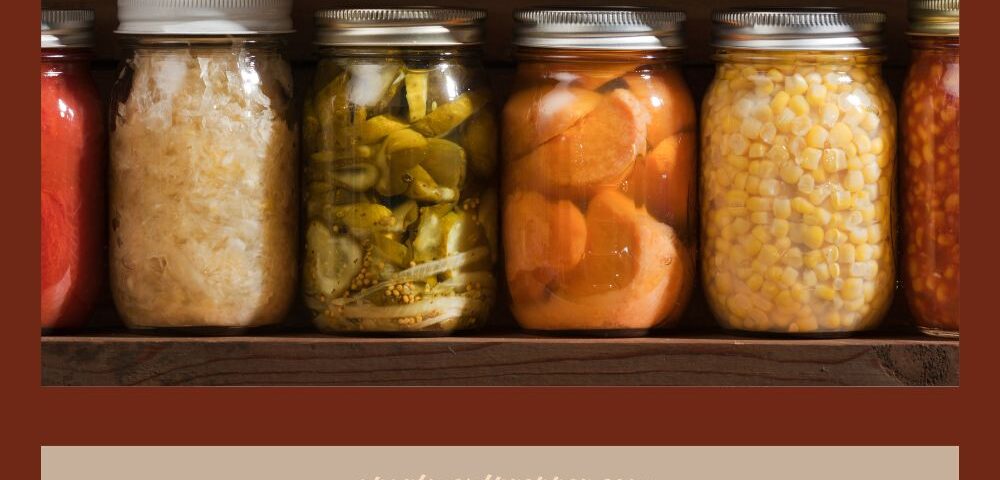Written by Bernie Carr
Home canning is a great way to preserve foods. But you have to know what you’re doing. I came across this recent article in the news about two women who ended up in the hospital’s intensive care unit after coming down with botulism. They attended a gathering and were served a salad containing home canned cactus pods. The report said 10 other guests who attended the party were also hospitalized with symptoms of botulism but were discharged. The communicable disease specialist of Fresno County, CA, where it happened, found out the person who canned the cactus pods did not follow safety procedures, and had picked up canning directions from family and friends. This is why you must use caution when consuming homemade canned foods, especially if you didn’t make the food.
They may look tasty, but homemade canned foods can harbor potential risks if not handled and prepared correctly. Here’s why it’s crucial to exercise caution especially when consuming other people’s home-canned food.
1. Food Safety Concerns:
One of the primary reasons for caution is food safety. Improperly canned foods can harbor dangerous bacteria such as Clostridium botulinum, which causes botulism—a severe illness that can lead to paralysis or even death. This bacterium thrives in low-acid, anaerobic environments like improperly canned vegetables or meats. Unless the canning process is done correctly—using adequate heat and pressure to destroy bacteria—there’s a risk of contamination. The CDC offers home safety canning guidelines here. If you are interested in canning safely, follow a trusted book such as The Prepper’s Canning Guide.
2. Lack of Control Over Preparation:
When you eat homemade canned foods prepared by others, you relinquish control over the entire canning process. Factors such as the cleanliness of equipment, proper sealing techniques, and adherence to recommended canning methods can significantly impact the safety of the final product. Without assurances of these factors, consuming homemade canned goods becomes a gamble with your health.
3. Storage and Handling Conditions:
Proper storage and handling are critical to maintaining the safety of canned foods. If jars are not stored in a cool, dry place or if lids are compromised, the risk of bacterial growth increases. Moreover, if jars have been improperly handled before reaching your table—such as being stored in fluctuating temperatures or exposed to contaminants—the risk escalates further. Tip: If you want to try making preserves without actually canning, why not try making refrigerator jam as we covered in last week’s article. It keeps well in the fridge for about a month.
4. Variability in Recipes and Techniques:
Recipes for home canning vary widely, and so do the techniques used. While some individuals follow USDA guidelines or tested recipes from reputable sources, others may use older recipes or methods passed down through generations. These older methods may not account for updated safety standards or microbiological risks, increasing the likelihood of unsafe food.
5. Allergic Reactions and Dietary Concerns:
Beyond safety, homemade canned foods may pose risks for individuals with allergies or specific dietary needs. Ingredients or cross-contamination during the canning process may not be apparent, leading to unintended exposure to allergens or dietary restrictions.
6. Trust and Transparency:
Lastly, while the gesture of sharing homemade canned goods is often rooted in goodwill and tradition, trust and transparency about the canning process are essential. Ask questions about how the food was prepared, what ingredients were used, and how it was stored. It’s crucial to ensure that the person canning the food understands and follows safe practices.
Conclusion
While homemade canned foods can be delightful and full of flavor, they also come with potential risks that shouldn’t be overlooked. Ensuring the safety of these foods requires careful consideration of the canning process, storage conditions, and transparency about preparation methods. Ultimately, by exercising caution and being aware of these risks, you can continue to enjoy homemade canned goods safely and responsibly.
Don’t get me wrong. Canning is an excellent way to preserve foods. But you must follow safety practices, and you need to know if the person who made the home canned foods is safety-conscious as well. Remember, when in doubt, it’s okay to politely decline or inquire further. Your health and well-being are worth the extra attention to detail.
We are an affiliate of Amazon.com, which means we received a small commission if you click through one of our Amazon links when you shop, at totally no cost to you. This helps keep the lights on at the blog. Thanks!
About the author
Bernie Carr is the founder of Apartment Prepper. She has written several books including the best-selling Prepper’s Pocket Guide, Jake and Miller’s Big Adventure, The Penny-Pinching Prepper and How to Prepare for Most Emergencies on a $50 a Month Budget. Bernie’s latest e-book, FRUGAL DIY has just been released on Amazon. Her work appears in sites such as the Allstate Blog and Clark.com, as well as print magazines such as Backwoods Survival Guide and Prepper Survival Guide. She has been featured in national publications such as Fox Business and Popular Mechanics. Learn more about Bernie here.
FB: https://www.facebook.com/apartmentprepper
Instagram: https://www.instagram.com/apartmentpreppers/
Twitter: https://twitter.com/AptPrepper
YouTube: https://www.youtube.com/channel/UC7vOtdbo-wiBeBxD6puCr1Q
Patreon: https://patreon.com/apartmentprepper
Pinterest: https://www.pinterest.com/aptprepper/
Today’s societal climate not supportive of prepping. With your help, we can keep bringing you content that is often suppressed. Help keep Apartment Prepper alive.
Join me on Patreon for ad-free content.

Or Help out via Paypal




One comment